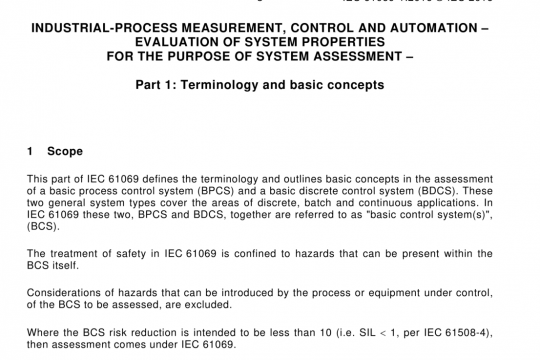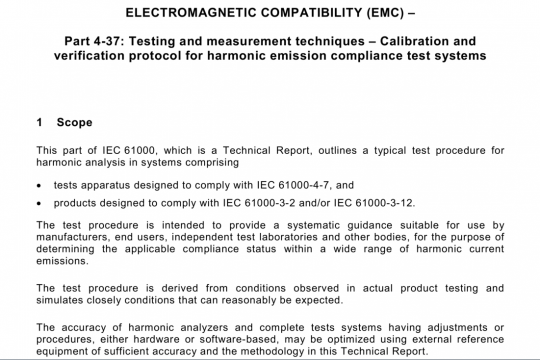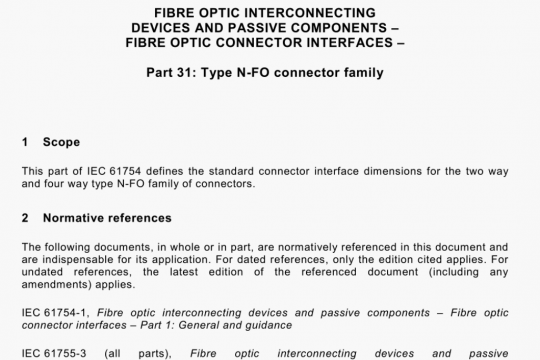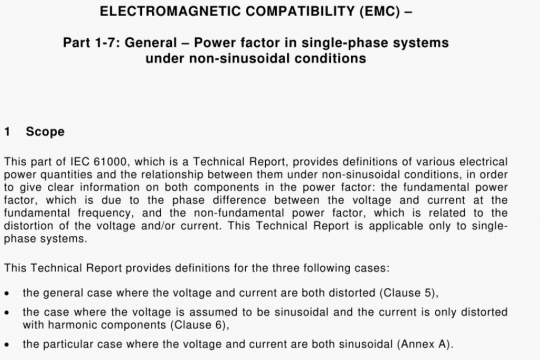PD IEC TS 62910 pdf free download
PD IEC TS 62910 pdf free download.Utility-interconnected photovoltaic inverters — Test procedure for under voltage ride-through measurements.
4.3.2 DC source
A PV array, PV array simulator or controlled DC source with PV characteristics may be used as the DC power source to supply input energy for the UVRT test. As the EUT input source, the DC power source shall be capable of supplying the EUT maximum input power and other power levels during the test, at minimum and maximum input operating voltages of the EUT.
The PV simulator should emulate the current/voltage characteristic of the PV module or PV array for which the EUT is designed. The response time of a PV simulator should not be longer than the MPP tracking response time of EUT.
For a EUT under test without galvanic isolation between the DC side and AC side, the output of the PV simulator shall not be earthed.
The equivalent capacitance between the output of the PV simulator and earth should be as low as possible in order to minimize the impact on the EUT.
A PV array used as the EUT input source shall be capable of matching the EUT input power
levels specified by the test conditions. It is necessary to select a period of time in which the solar irradiance is stable and does not vary more than 5 % during the test.
4.3.3 Short-circuit emulator
As part of the grid simulator device, the short-circuit emulator is used to create the voltage drops due to short-circuits between the two or three phases, or between one or two phases to ground, via the impedance network Z1 and Z2 as shown in the test device layout in Figure 2.
The impedance Z1 is used to limit the effect of the short circuit on the utility service that powers the test circuit. The sizing of Z1 shall therefore account for all test sequences to be performed and limit the short-circuit current taken from the grid to values that do not cause an excessive reduction of the grid voltage. Considering an acceptable voltage reduction of at most 5 % when performing the test, the minimum value of Z1 shall be at least 20 x ZOrid, where ZGrjd is the grid short-circuit impedance measured at the test circuit connection point.
To ensure that the test is realistic, however, the apparent short-circuit power (SEUT) available at the EUT connection node NEUT should be at least equal to 3xPn, where Pu is the rated power of the EUT (minimum value SEUT> 3 x Pn, recommended 5 x Pu <SEUT < 6 x Pu). This means during the short-circuit tests, the contribution of current through Z1 and Z2 from the grid remains dominant compared to the current contributed by the EUT. In this way, the inverter current does not create a significant voltage rise for the duration of the test relative to the no-load drop.
The two conditions described above define the minimum and maximum limits of Z1. The two conditions combined also define the limit criteria for the choice of a grid infrastructure suitable for performing the test with the impedance circuit. If the grid infrastructure cannot meet above requirements, an alternative test circuit utilizing a back-to-back converter is allowed, as shown in Figure 2 may be added to reduce the grid short-circuit impedance ZGrid.PD IEC TS 62910 pdf download.




